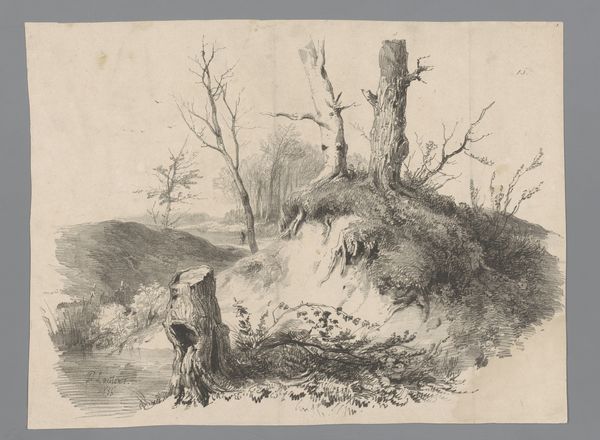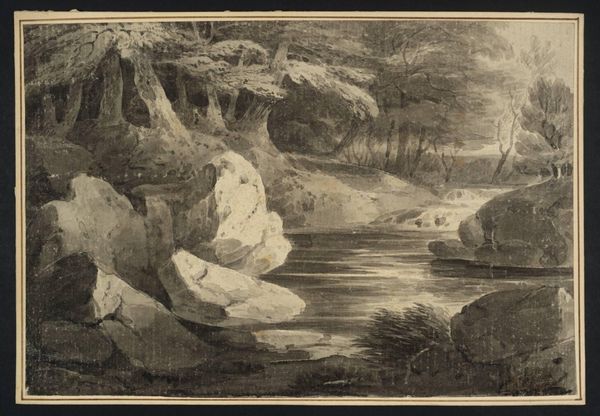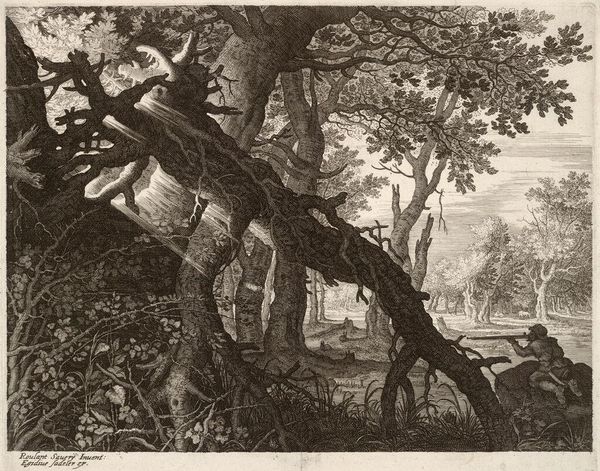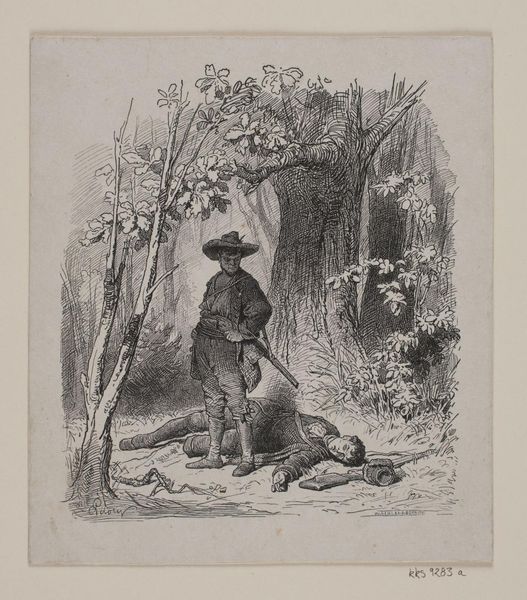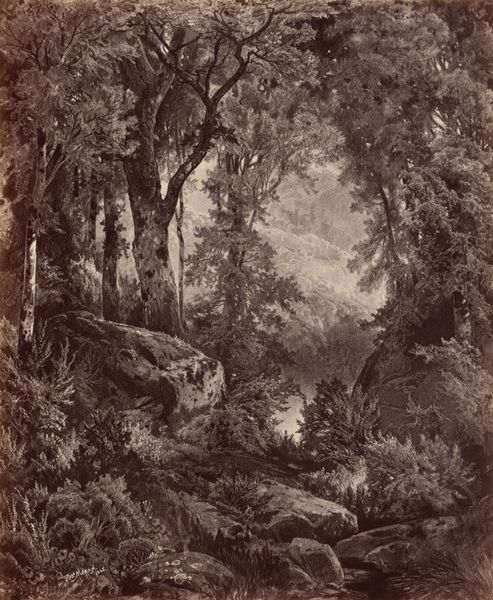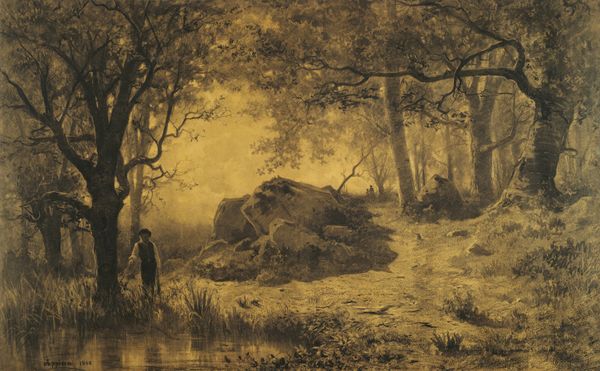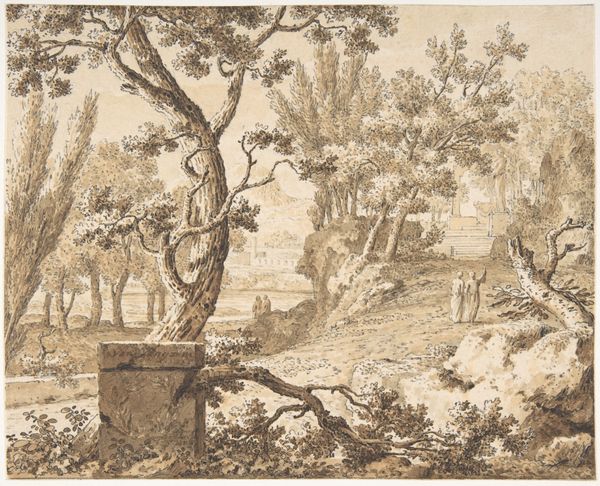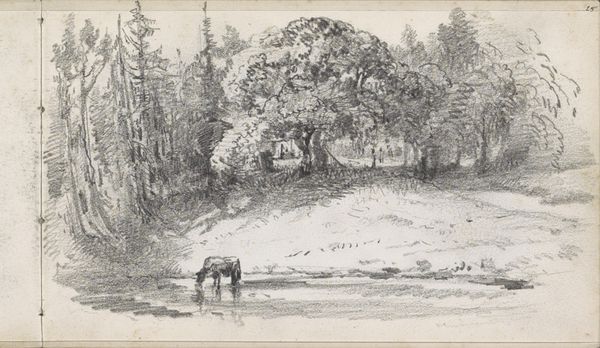
plein-air, watercolor
#
plein-air
#
landscape
#
figuration
#
watercolor
#
underpainting
#
romanticism
#
water
#
watercolour illustration
Dimensions: 5 3/16 x 6 15/16 in. (13.2 x 17.6 cm)
Copyright: Public Domain
Robert Walter Weir made this watercolor painting, "The Entrance to a Wood" sometime in the mid-19th century. Note the threshold of the wood, with a man in a dark coat standing at the edge. This evokes a deep sense of Romanticism, a fascination with nature. Consider the symbol of the forest across time. In ancient mythology, forests are often depicted as dangerous, untamed places of transformation, as seen in tales like "Little Red Riding Hood." Here, the forest appears less threatening, yet still retains an air of mystery. The man stands at its edge, contemplating entry. He is a symbol of the psychological boundary between the known and the unknown, the conscious and the unconscious. We see this boundary repeated in art through the ages, such as Caspar David Friedrich's wanderers standing before vast landscapes. The forest’s edge, like the mountain's peak, represents the sublime, beckoning us toward exploration and introspection. The echoes of these motifs remind us of art’s power to tap into collective memory, resonating with us on a profound, almost primal level. This image invites us to ponder the cyclical journey of self-discovery that spans art history.
Comments
No comments
Be the first to comment and join the conversation on the ultimate creative platform.


